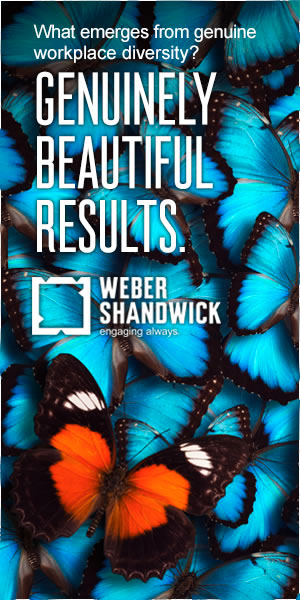- Brands, brands, brands: SXSWi 2017 was a showcase for brand activation, but not the technology and digital media brands you might expect at a conference traditionally attended by trendsetters and tastemakers. This year’s conference featured 360-degree, immersive, interactive brand experiences targeted at everyday consumers, highlighting upcoming TV shows, movies, retailers, apps, gadgets, and consumer products. This year’s fest featured everything from a visually accurate, full-sized Los Pollos Hermanos fast food pop-up focused on creating excitement for the comeback of Gus Fring (the character played Giancarlo Esposito on AMC’s “Breaking Bad”) to its “Better Call Saul” prequel, to a provocative and highly immersive Gatorade sports performance experience, to Casper Mattress’ brilliant partnership with the OneNight app providing 45 minute nap respites to tired attendees at the ultra-hip and retro Austin Motel. Each year, the activations become more pervasive and increasingly clever. These savvy brands don’t benefit from their in-person activations alone; they grow legs with great media exposure, social sharing, and word of mouth. I think we’ll continue to see SXSW as a platform for brand launches and unexpected activations. However, based upon unofficial reports, the total number of events for which attendees could RSVP dropped by almost 100 from 2016 to 2017. It’s possible we’ll continue to see a decline in the number of events, with a corollary increase in more curated guest lists, as the quality of those events and activations increase in quality and excitement.
- Brand absenteeism: While brand activation was a big story for me this past year, I was surprised by the absence or dialing-back of some SXSW’s mainstay brands like Spotify and Samsung – brands that seem like a perfect fit for SXSW’s vibe. SXSW has become a global stage for translating online and media brands into offline experiences, but many brands are finding it expensive and inefficient to garner awareness and bond with audiences offline. At an event that hosts an estimated 70,000+ attendees, exhibitors, performers, and guests, it’s become increasingly difficult for brands to get their messages to the right people, at the right place, at the right frequency, at the right time. Between Austin’s enhanced real estate restrictions that made getting space downtown for special events more difficult this year, and the sheer proliferation of brands and messages, Austin’s SXSW has become an increasingly difficult event at which to activate brands unless you have huge ideas, once-in-a-lifetime experiences and budgets that can cut through the noise. Since downtown Austin isn’t getting any bigger, I think we’ll continue to see a changing brand landscape at future festivals.
- Technology not for technology’s sake, but as a means to create a lifestyle: This year’s SXSW featured an entire track dedicated to retail technology and fashion as well as lots of deep-dives on Virtual and Augmented Reality. As technology continues to be a means for producers and purveyors of hard goods, soft goods, and experiences to deliver to their customers, SXSW stepped up its game to showcase technologies such as VR and AR and their roles in personalizing and customizing our shopping and media consumption experiences. Since VR and AR technologies are in their infancy, this dialogue is sure to continue well into coming years.
- SXSW gets political: While SXSW 2017 featured many of the delightfully quirky and geeky attributes we’ve come to expect from the 31-year old conference, attendees saw politics – specifically the issue of inclusivity – step into center stage, on and off the show floor. From Joseph Biden’s impassioned Cancer speech (Biden said that cancer is the “only bipartisan thing left in the United States.”), to SXSW organizers’ bathroom signage stating the conference’s pledge to being “inclusive, diverse and forward-thinking,” and opposing “discriminatory legislation,” SXSW 2017 took a very strong political tone. This year’s show featured panels that addressed Silicon Valley’s diversity problems. Tumblr’s CEO Tom Karp announced an initiative to support Planned Parenthood (#TechStandswithPP.) And the music part of the conference hosted showcases featuring bands affected by President Trump’s travel ban. As long as powerful people speak, exhibit at, and attend SXSW, we’ll see the event as a platform for advancing political sentiments.
- Inclusivity increases: While it’s been my personal experience that SXSW has been encouraging diversity, 2017’s actual Interactive conference attendees (those with paid badges I saw wandering around the convention center and other official badged locations) still looked like a bro-club to me. While conference organizers claim that the entire festival attracts 70,000+ attendees and speakers of all ages, genders, ethnicities from upwards of 80 different countries, badged SXSW Interactive attendees still look like 30-40 something year old white dudes. For all the forward thinking, futuristic nature that the conference supposedly embodies, a lot of what the naked eye sees is rooted in traditional industry structures. Aside from panels about diversity in the technology industry, and investing in companies run by “diverse” founders, and a handful of sideshow events and meetups, the conference itself doesn’t exactly match the faces of the technology industry I know and love. While the industry has made some important strides towards inclusivity (and had many setbacks too – today’s news of Uber’s President resigning amidst a bevvy of sexual harassment claims at the company doesn’t bode well for the industry’s future), I think we’ll see SXSW assuming more of a lead role in populating an event with faces that more closely match those of the industries it celebrates.
 Deb Gabor was born to brand. She is the founder and brand dominatrix of Sol Marketing, a brand strategy consultancy obsessed with building winning brands. Since 2003, the Sol Marketing team has led brand strategy engagements for organizations ranging from international household names like Dell, Microsoft, and NBC Universal, to digital winners like Allrecipes, Cheezburger, HomeAway and RetailMeNot, and dozens of early-stage tech and digital media titans.
Deb Gabor was born to brand. She is the founder and brand dominatrix of Sol Marketing, a brand strategy consultancy obsessed with building winning brands. Since 2003, the Sol Marketing team has led brand strategy engagements for organizations ranging from international household names like Dell, Microsoft, and NBC Universal, to digital winners like Allrecipes, Cheezburger, HomeAway and RetailMeNot, and dozens of early-stage tech and digital media titans.
Through Investorpitches.com, a division of Sol Marketing, hundreds of start-up founders have benefited from Deb’s wizardry for crafting pitches that entice investors to open their wallets to the tune of up to $85 million.
For more information, please visit www.brandingissex.com and www.solmarketing.com. Connect with Deb on Twitter, Facebook and LinkedIn.
Branding is Sex is available from Amazon and wherever fine books are sold.


